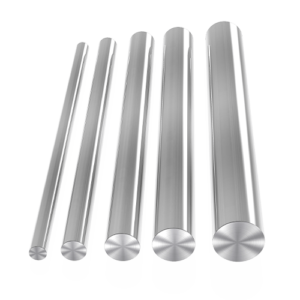Introduction

Craftsmanship is the soul of precision engineering, and in the realm of metals, 420 stainless steel round bars stand as stalwart symbols of this artistry. Renowned for their durability, corrosion resistance, and machinability, these round bars play a pivotal role in a myriad of industries, from aerospace to medical devices. This blog delves into the intricate world of 420 stainless round bars, exploring their composition, properties, applications, and the craftsmanship behind their production.
Understanding 420 Stainless Steel Round Bars
To comprehend the significance of 420 stainless steel round bars, it’s imperative to dissect their composition and properties. These round bars are typically composed of 12% chromium, which grants them excellent corrosion resistance, particularly in environments where exposure to moisture and chemicals is prevalent. Additionally, the inclusion of carbon enhances their hardness and strength, making them suitable for applications requiring robust materials.
Applications Across Industries
The versatility of 420 stainless steel round bars renders them indispensable across various industries. In aerospace, these round bars find application in critical components such as shafts, fasteners, and surgical instruments. The medical sector relies on their biocompatibility and sterilization capabilities for implants and surgical tools. Moreover, in the automotive industry, 420 stainless round bars contribute to the manufacturing of components like valves and gears, where strength and corrosion resistance are paramount.
Craftsmanship in Production
Crafting 420 stainless steel round bars demands meticulous attention to detail and adherence to stringent quality standards. From the selection of raw materials to the final polishing, every step in the production process requires precision and expertise. Skilled metallurgists employ advanced techniques like hot rolling and annealing to achieve the desired mechanical properties and microstructure, ensuring that each round bar meets exacting specifications.
Advantages and Innovations
The enduring popularity of 420 stainless steel round bars can be attributed to their myriad advantages and ongoing innovations. Advanced metallurgical research continues to refine their composition, enhancing properties such as hardness and toughness. Furthermore, innovative manufacturing processes, such as precision grinding and centerless grinding, have optimized the surface finish and dimensional accuracy of these round bars, expanding their applicability in high-precision engineering.
420 stainless steel round steel performance

| Property | Description |
|---|---|
| Corrosion Resistance | Due to its high chromium content, 420 stainless steel exhibits exceptional resistance to corrosion. |
| Hardness | With proper heat treatment, 420 stainless round bars can achieve impressive levels of hardness. |
| Machinability | The machinability of 420 stainless steel facilitates intricate designs and precise engineering. |
Conclusion
In conclusion, 420 stainless steel round bars epitomize the essence of craftsmanship in precision engineering. Their superior properties, coupled with meticulous production techniques, make them indispensable in a wide array of industries. As technology advances and metallurgical science evolves, the role of these round bars will only continue to expand, further solidifying their position as cornerstone materials in the realm of precision engineering.
FAQ
Q:What distinguishes 420 stainless steel round bars from other stainless steel grades?
A:The key distinguishing feature of 420 stainless steel is its high carbon content, which contributes to its exceptional hardness and strength compared to other stainless steel grades.
Q:Can 420 stainless steel round bars be welded?
A:Yes, 420 stainless steel round bars can be welded using standard welding techniques. However, preheating and post-weld annealing may be necessary to mitigate the risk of cracking and ensure optimal mechanical properties.
Q:What are the common heat treatment processes for 420 stainless steel round bars?
A:Common heat treatment processes for 420 stainless steel include annealing, quenching, and tempering, which are employed to achieve desired hardness levels and mechanical properties.
Q:Are there any limitations to the use of 420 stainless steel round bars?
A:While highly versatile, 420 stainless steel round bars may exhibit lower corrosion resistance compared to other stainless steel grades in highly corrosive environments. Proper maintenance and surface treatments can mitigate this limitation.
Q:What industries benefit most from the use of 420 stainless steel round bars?
A:Industries such as aerospace, automotive, medical, and manufacturing benefit greatly from the exceptional properties of 420 stainless steel round bars, utilizing them in a wide range of applications where durability, corrosion resistance, and machinability are paramount.
